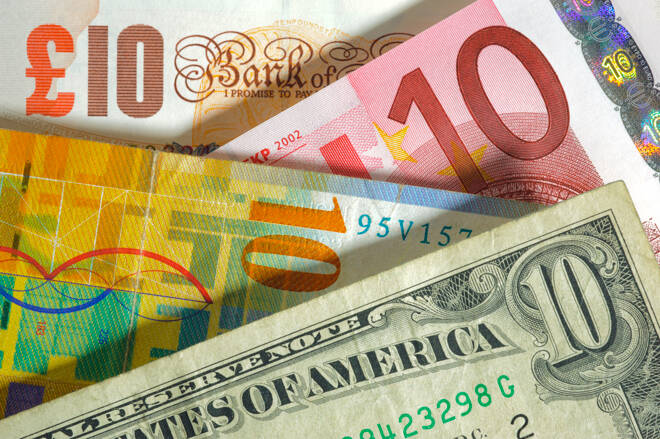Advertisement
Advertisement
4th Quarter GDP Figures and Weekly Jobless Claims Keeps the Greenback in Focus
By:
U.S economic data and market sentiment towards the economic outlook to provide direction. Expect COVID-19 news and chatter from Capitol Hill to also influence.
Earlier in the Day:
It’s was a relatively busy start to the day on the economic calendar this morning. The Kiwi Dollar and the Japanese Yen were in action in the early in the day.
For the Kiwi Dollar
The trade surplus narrowed from NZ$290m to just NZ$17m in December. Year-on-year, the trade surplus narrowed from NZ$3,300m to NZ$2,940m.
According to the NZ Stats,
-
-
- Imports tumbled by NZ$7.4bn compared with year to December 2019.
- This was the largest annual December decline since December 2009.
- Petroleum and product imports fell by NZ$2.4bn following COVID-19 travel restrictions.
- Imports of vehicle, parts, and accessories fell by NZ$2.1bn over the same period.
- Mechanical machinery and equipment imports fell by NZ$1.1bn.
- Exports increased by a modest NZ$24m to NZ$60bn in the year to December 2020.
- Breathing equipment exports, due to high demand during the COVID-19 pandemic, rose by NZ$526m.
- Fruit exports increased by NZ$525m, with aircraft and parts exports rising by NZ$435m.
-
The Kiwi Dollar moved from $0.71617 to $0.71563 upon release of the figures. At the time of writing, the Kiwi Dollar was down by 0.36% to $0.7134.
For the Japanese Yen
Retail sales fell by 0.3%, year-on-year, in December, partially reversing a 0.6% rise in November. Economists had forecast a 0.4% decline.
The Japanese Yen moved from ¥104.162 to ¥104.213 upon release of the figures. At the time of writing, the Japanese Yen was down by 0.21% to ¥104.33 against the U.S Dollar.
Elsewhere
At the time of writing, the Aussie Dollar was down by 0.48% to $0.7626.
The Day Ahead:
For the EUR
It’s a quiet day ahead on the economic calendar. Prelim German inflation figures for January are due out later today.
Barring another marked decline, however, we don’t expect the numbers to have an impact on the EUR.
The lack of stats will leave the EUR in the hands of COVID-19 news and sentiment towards the economic recovery.
At the time of writing, the EUR was down by 0.17% to $1.2090.
For the Pound
It’s another particularly quiet day ahead on the economic calendar. There are no material stats to provide the Pound with direction.
The lack of stats will leave the Pound in the hands of COVID-19 vaccination rates and updates vis-à-vis the new strains of the virus.
At the time of writing, the Pound was down by 0.15% to $1.3667.
Across the Pond
It’s a busy day ahead on the economic calendar. 4th quarter GDP figures are due out along with the weekly jobless claim figures.
Expect both sets of numbers to influence. A marked rise in initial jobless claims, however, would likely overshadow any better-than-expected GDP numbers.
Other stats due out include December trade data and housing sector figures that should have a muted impact on the Dollar.
Away from the economic calendar, chatter from Capitol Hill and COVID-19 updates will also remain in focus, however.
At the time of writing, the Dollar Spot Index was up by 0.11% to 90.750.
For the Loonie
It’s a relatively quiet day on the economic data front. Building permit figures for December are due out late in the day.
We don’t expect the Loonie to respond to the numbers, however.
COVID-19 news will likely have the final say on crude oil prices and the Loonie on the day.
At the time of writing, the Loonie was down by 0.23% to C$1.2829 against the U.S Dollar.
For a look at all of today’s economic events, check out our economic calendar.
About the Author
Bob Masonauthor
With over 28 years of experience in the financial industry, Bob has worked with various global rating agencies and multinational banks. Currently he is covering currencies, commodities, alternative asset classes and global equities, focusing mostly on European and Asian markets.
Advertisement
